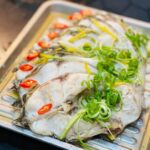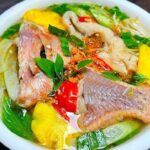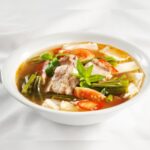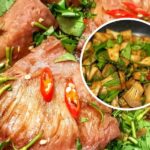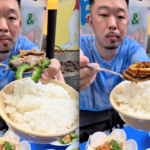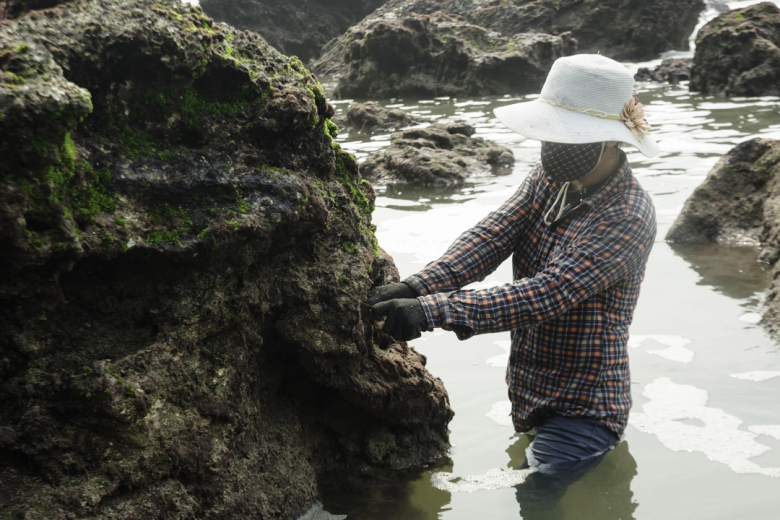
Exploring the Unique Delicacy of “Rau Cạo” from Quỳnh Lưu, Nghệ An
Quỳnh Lưu, a coastal region in Nghệ An, is renowned for its unique vegetable, “Rau Cạo,” which thrives on the damp rocks constantly kissed by the tides. The harvesting season for this vegetable typically spans from March to July, with some sources indicating an earlier season, starting in February and ending in May. Despite slight variations in timing, the common thread is the dedication of the local fishermen who venture out to sea in search of this “green gold.”
Fresh “Rau Cạo” boasts a distinctive coffee-like hue. Locating abundant patches of this vegetable demands years of experience and an intimate knowledge of the rocks and water levels. Harvesting “Rau Cạo” is an art form in itself; it requires skill and precision to avoid contaminating the crop with sand, snails, or small rocks. This meticulous process ensures the highest quality harvest.
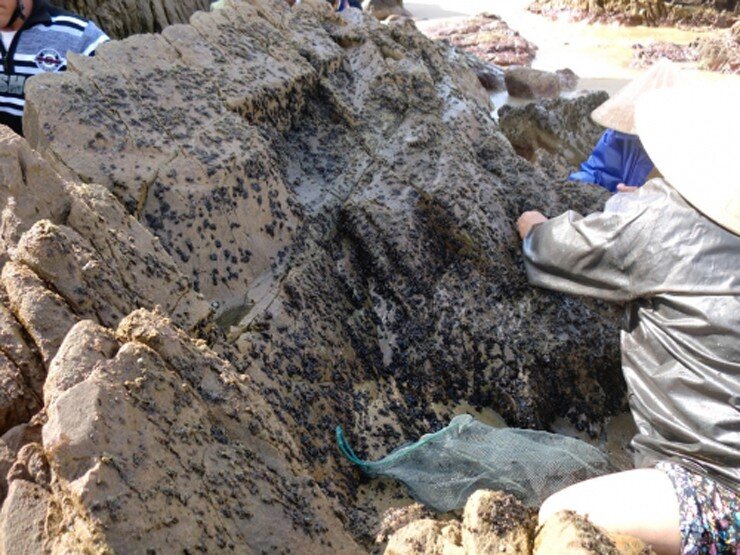
“Rau Cạo” was once a humble staple in the daily diet of the local fishermen, even considered a lifesaver during tough times. It was not a delicacy widely sold or known to tourists. However, in recent years, its value has been elevated. Thanks to its unique flavor and distinctiveness, “Rau Cạo” has found its way into the menus of numerous seaside restaurants and eateries in Quỳnh Lưu, catering to the culinary curiosities of visitors.
This transformation has elevated “Rau Cạo” from a simple peasant food to a sought-after specialty, providing a stable and significant source of income for the local community. What makes this vegetable even more remarkable is that it requires no investment or cultivation; it grows wild, and during the season, locals harvest it directly from the rocks, turning this wild vegetable into a precious gift from nature.
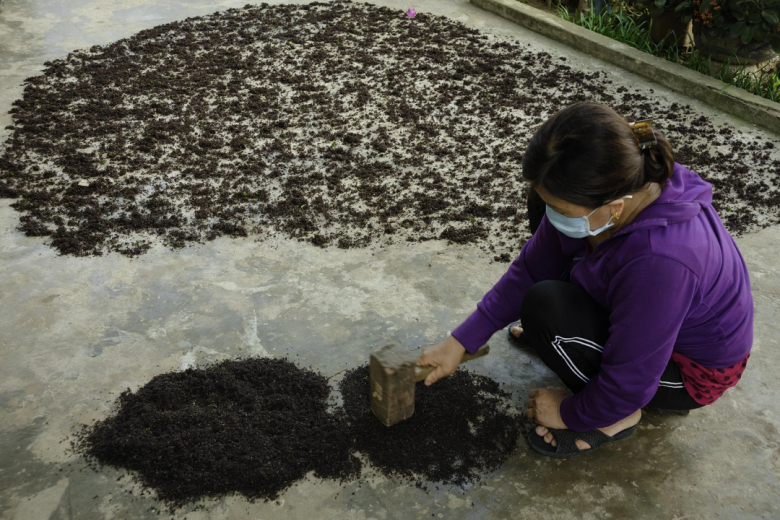
Harvesting “Rau Cạo” is no easy feat. This vegetable grows only in damp conditions, firmly attached to the rocks, requiring harvesters to brave the waves and exhibit remarkable perseverance. As the tide recedes, the locals set out with their tools, beginning the arduous task of scraping the vegetable from the rocks. A diligent harvester can gather around 3-5kg of fresh “Rau Cạo” daily, earning them a daily income of 300,000 – 400,000 VND during the peak season. Monthly earnings from “Rau Cạo” can amount to several million VND, significantly improving the economic situation of many families.
After harvesting, “Rau Cạo” undergoes initial processing at the beach, followed by a meticulous cleaning process back home. The women of the village, in particular, dedicate themselves to meticulously sorting, rinsing, and washing the vegetable multiple times to ensure it is entirely free of sand, grit, and other impurities. This stage demands patience and meticulousness to guarantee the vegetable’s pristine state before it reaches the market or enters the kitchen.
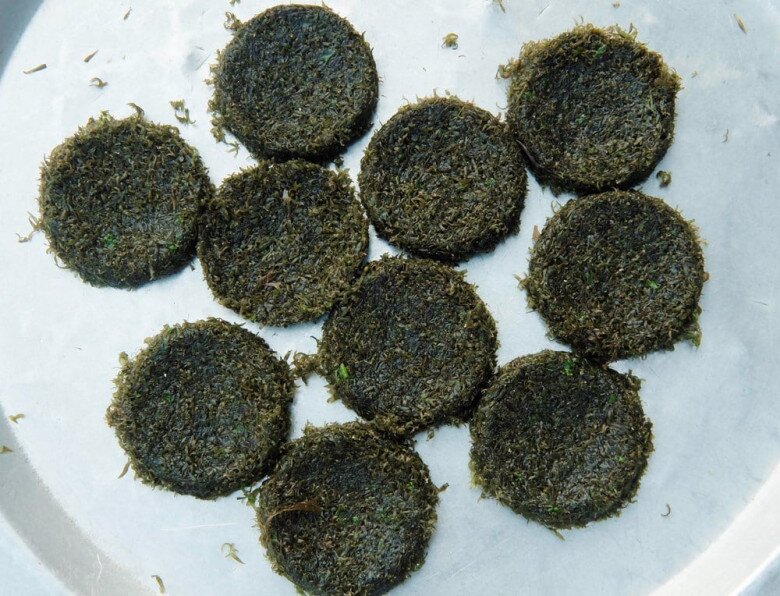
Fresh “Rau Cạo” can be sold directly or processed into dried “Rau Cạo” for extended preservation. The process for dried “Rau Cạo” is even more laborious: it takes 4kg of fresh produce to yield just 1kg of the dried product. The fresh vegetable is sun-dried, then gently pounded with an iron hammer or wooden pestle to remove any remaining stones or pebbles. It is then thoroughly washed and sun-dried again before packaging. Dried “Rau Cạo” fetches a price of approximately 300,000 VND per kilogram.
The pricing of “Rau Cạo” fluctuates with the seasons. At the beginning of the season, when supply is limited, fresh “Rau Cạo” can command a price of up to 150,000 VND per kilogram. As the season progresses and more harvesters join the fray, the price tends to drop, settling around 70,000 – 80,000 VND per kilogram. Nonetheless, this remains a relatively high price compared to other common vegetables, underscoring its exceptional value.
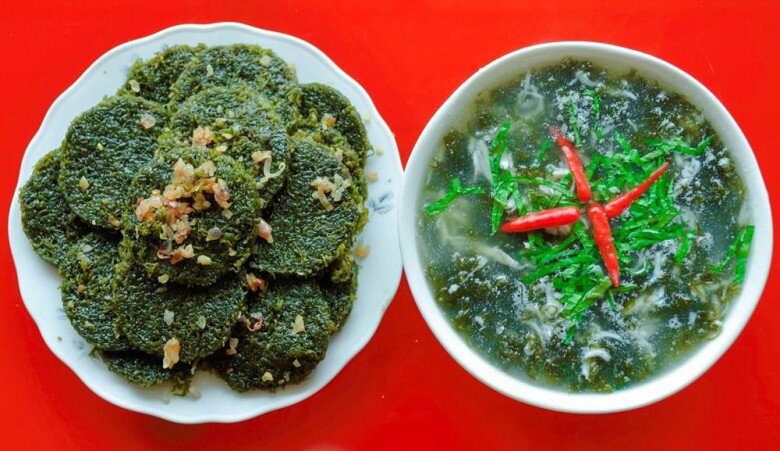
“Rau Cạo,” once a humble wild vegetable, has evolved into a symbol of the resilience and industriousness of the people of Quỳnh Lưu, showcasing the richness and diversity of Vietnamese regional cuisine.

























